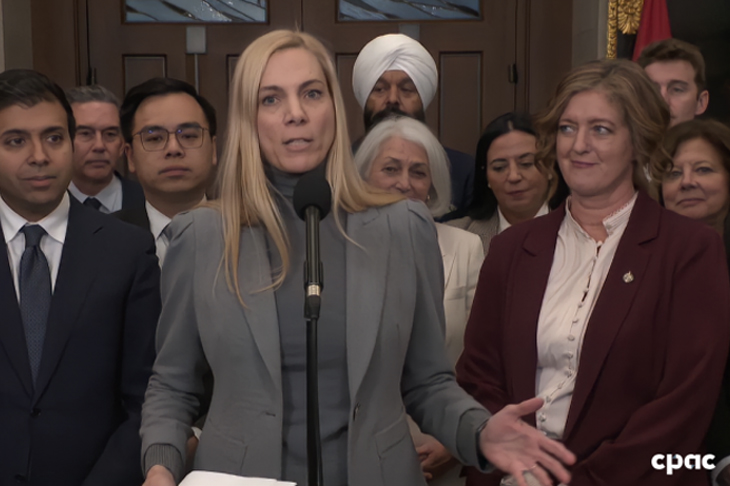Part VIII in our series on rewriting the Telecom and Broadcasting Acts
IT’S BEEN PRETTY CLEAR throughout Cartt.ca’s investigation of the opportunities and challenges associated with modernizing Canada’s telecommunications and broadcasting legislative frameworks that the Broadcasting Act appears most in need of updating.
We won’t rehash it here (check the prior seven articles on our “Investigates” page), but think Netflix and their online TV provider brethren and the myriad challenges facing media. That said, the Telecommunications Act requires some tweaking, too, according to interviews and comments in industry fora.
It’s been nearly two years since broadband services were deemed an essential telecommunications service. In April 2016, then CRTC chair Jean-Pierre Blais made an unprecedented speech at the Basic Service Objective (BSO) hearing after only seven of a scheduled 21 day hearing, which included discussion on whether broadband should be considered an essential service on the same footing as telephone services. He declared broadband to be vital.
“Overall, in a nutshell, witnesses that appeared so far have agreed to a self-evident truth: today, in Canada, broadband is vital,” he said. “So, unless you disagree with this conclusion, let us not spend more hearing time on this self-evident truth. We have other, more important things to focus on.”
While the words marked a significant step forward in telecommunications policy, they don’t carry much weight in ensuring all Canadians have broadband.
John Lawford, executive director of the Public Interest Advocacy Centre (PIAC), laments the fact there is still no universal service obligation in the Telecommunications Act. He points to the 2006 Telecommunications Policy Review Panel report (written by lawyer Hank Intven, venture capitalist Gerri Sinclair and professor André Tremblay) which recommended adopting a U.S.-style universal obligation to serve.
“That report said, like in the United States, there should be. And what do you get out of having that obligation is you get that whole super structure in the United States of Lifeline… to connect low income people because you have to, because that’s your legal duty and it’s right there in the Act,” he explained.
The incumbent Canadian telecom companies may have an obligation to provide broadband much like they have to provide telephone service under CRTC rules, but that’s negated by Commission decisions to forbear from regulating local telephony in areas where there is sufficient competition.
This was one of the problems to come out of the BSO decision, argued Lawford: The Commission can’t require a company to put broadband in an underserved community.
“So it’s in this weird grey zone and that’s why they can’t make the companies offer it in the boonies.” – John Lawford, PIAC
“The companies might patch it in just so they don’t fuel the argument that there should be a government backbone that serves these areas, but if you’re on the edge of a city and there is no line there and there’s no subsidy, they ain’t going to serve you because they don’t have to. And in the States, they do. So that’s a missing, quiet thing. Most people don’t get affected by it but the people on the margins do,” he argued.
So despite the declaration of broadband as an essential service, there is nothing directly in the policy toolkit or regulations which forces communications service providers to provide broadband to Canadians, everywhere.
“They say yes, you guys all need it but nobody is legally required to provide it. So it’s in this weird grey zone and that’s why they can’t make the companies offer it in the boonies,” he said.
While consumer advocates want there to be an explicit broadband obligation in the Telecommunications Act, small ISPs aren’t concerned. As long as they can apply for funding either the federal government’s Connect to Innovate program or the pending CRTC broadband fund to strengthen and extent their networks, they’re satisfied with how it is now.
Jay Thomson, chief executive at the Canadian Cable Systems Alliance (CCSA), noted that rules around the provision of broadband appear to be working well as is.
“If it’s already working now which it seems to be with the Commission having that power then we don’t see any particular need for change,” he said.
5G’s coming challenges
THERE IS ANOTHER potential challenge facing telecommunications policy in the future, and it relates to wireless networks. In the next couple of years, Canadian wireless carriers will begin deploying what’s known as 5G networks, infrastructure that will feature speeds and capacity that are significant upgrades from today’s 4G LTE infrastructure. It will enable a wide range of applications including the connected and autonomous car (More on recent 5G developments in Canada HERE and HERE.)
To reach the speeds, capacity and latency promised by 5G, network cells will have to be considerably smaller than they are today. This means there will be challenges for wireless operators when it comes to deploying towers and antennas.
Shaw Communications argued at a recent Canadian Wireless Telecommunications Association 5G event in Ottawa the Telecommunication Act must be strengthened to give the CRTC authority over electric utility poles, too.
Paul Cowling, VP of regulatory at Shaw, noted that this is a particularly timely issue since the Ontario Energy Board is now consulting with stakeholders on a doubling of the rates utilities charge for third party access to their poles.
The previous rate, unchanged since 2005, had been set at $22.35 per pole per year. The new rate is $52, and according to a December 18, 2017 OEB draft report reflects 2010 to 2015 data.
Given the significant hike in pole access rates and the fact that 5G networks in urban centres will need to be considerable more dense, it’s understandable why the wireless carriers are concerned and want the government to step in. (Municipalities are also seeing telecom firms as potential cash cows when it comes to access rights.)
Rogers Communications representatives added at the same event the “current patchwork of regulatory regimes contains prohibitively expensive access fees and will needlessly delay and possibly prevent implementation.”
David Watt, senior VP of regulatory affairs at Rogers, noted in particular that parts of the Telecommunications Act will need to be interpreted or amended to grant wireless carriers access to municipal rights of way the same way it is for wireline infrastructure.
Telecom carriers “are unfairly penalized” when trying to attach equipment to utility poles, he said. “Regulatory discipline can only be achieved if the CRTC is granted authority to regulate the use of hydro poles and ductworks.”
We hope you’ve enjoyed our series, which fittingly ends on actual nuts and bolts issues. It will conclude next week with editor and publisher Greg O’Brien’s thoughts on the whole process and how there probably isn’t time to prune all these bushes before the end of the current government’s mandate.
Original artwork by Paul Lachine, Chatham, Ont.









